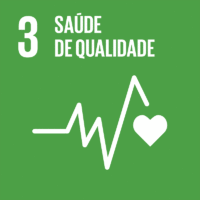Ciência_Iscte
Publicações
Descrição Detalhada da Publicação
A multilevel hypernetworks approach to capture properties of team synergies at higher complexity levels
Título Revista
European Journal of Sport Science
Ano (publicação definitiva)
2020
Língua
Inglês
País
Reino Unido
Mais Informação
Web of Science®
Scopus
Google Scholar
Esta publicação não está indexada no Overton
Abstract/Resumo
Previous work has sought to explain team coordination using insights from theories of synergy formation in collective systems. Under this theoretical rationale, players are conceptualised as independent degrees of freedom, whose interactions can become coupled to produce team synergies, guided by shared affordances. Previous conceptualisation from this perspective has identified key properties of synergies, the measurement of which can reveal important aspects of team dynamics. However, some team properties have been measured through implementation of a variety of methods, while others have only been loosely addressed. Here, we show how multilevel hypernetworks comprise an innovativemethodological framework that can successfully capture key properties of synergies, clarifying conceptual issues concerning team collective behaviours based on team synergy formation. Therefore, this study investigated whether different synergy properties could be operationally related utilising hypernetworks. Thus, we constructed a multilevel model composed of three levels of analysis. Level N captured changes in tactical configurations of teams during competitive performance. While Team A changed from an initial 1-4-3-3 to a 1-4-4-2 tactical configuration, Team B altered the dynamics of the midfielders. At Level N+1, the 2vs.1 (1vs.2) and 1vs.1 were the most frequently emerging simplices, both behind and ahead of the ball line for both competing teams. Level N+2 allowed us to identify the prominent players (a6, a8, a12, a13) and their interactions, within and between simplices, before a goal was scored. These findings showed that different synergy properties can be assessed through hypernetworks, which can provide a coherent theoretical understanding of competitive team performance.
Agradecimentos/Acknowledgements
--
Palavras-chave
Multilevel hypernetworks,Dynamics,Team synergies,Team collective behaviour,Performance analysis,Association football
Classificação Fields of Science and Technology
- Ciências da Computação e da Informação - Ciências Naturais
Registos de financiamentos
| Referência de financiamento | Entidade Financiadora |
|---|---|
| UID/EEA/50008/2020 | Fundação para a Ciência e a Tecnologia |
| UID/DTP/UI447/2019 | Fundação para a Ciência e a Tecnologia |
Contribuições para os Objetivos do Desenvolvimento Sustentável das Nações Unidas
Com o objetivo de aumentar a investigação direcionada para o cumprimento dos Objetivos do Desenvolvimento Sustentável para 2030 das Nações Unidas, é disponibilizada no Ciência_Iscte a possibilidade de associação, quando aplicável, dos artigos científicos aos Objetivos do Desenvolvimento Sustentável. Estes são os Objetivos do Desenvolvimento Sustentável identificados pelo(s) autor(es) para esta publicação. Para uma informação detalhada dos Objetivos do Desenvolvimento Sustentável, clique aqui.

 English
English


